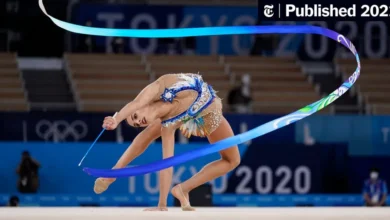Dribbling with a Pencil: How to Capture the Essence of Drawing:cul23ybyzfm= basketball

Introduction to drawing:cul23ybyzfm= basketball
drawing:cul23ybyzfm= basketball is more than just putting pencil to paper. It’s about capturing the spirit of the game, from the swift dribbles to electrifying dunks. Imagine freezing a moment where every muscle tenses before that perfect shot or conveying the energy of players darting across the court. Whether you’re an aspiring artist or a seasoned pro, understanding how to draw basketball can elevate your artwork and immerse viewers in this dynamic sport. Let’s dive into how you can harness your creativity and bring those thrilling moments to life through drawing!
The importance of understanding the essence of drawing:cul23ybyzfm= basketball

Understanding the essence of drawing:cul23ybyzfm= basketball is crucial for artists who want to convey the energy and excitement of the game. It goes beyond mere representation; it’s about capturing movement, emotion, and spirit.
You can translate what makes basketball dynamic—swift movements, quick pivots, or powerful jumps—into your artwork. Each stroke of your pencil reflects not just the player’s physicality but also their passion.
This understanding helps in choosing perspectives that amplify action. Instead of a static pose, focus on moments where tension builds—like a player poised for a dunk or a defender ready to block.
The essence lies in storytelling through imagery. Every line drawn should narrate an experience that resonates with viewers, whether they are sports enthusiasts or art lovers. Embracing this depth enhances your skillset and connection to the sport itself.
Tips for capturing movement and action through drawing:cul23ybyzfm= basketball
Capturing movement in drawing:cul23ybyzfm= basketball requires keen observation. Watch players on the court; notice their posture, footwork, and expressions. Each gesture tells a story.
Start with quick sketches. Draw athletes in action using fluid lines to express motion. Focus on the rhythm of their movements—how they dribble, leap, or pivot.
Use dynamic angles to enhance energy. A low viewpoint can emphasize height during a jump shot, while an elevated perspective showcases speed during fast breaks.
Incorporate motion lines around figures. These subtle cues guide viewers through the scene and convey a sense of urgency.
Experiment with exaggeration, too! Amplifying certain features can evoke excitement and drama in your artwork. Remember that capturing essence often means bending reality just enough to highlight key moments in the game.
Techniques for depicting different perspectives and angles in drawing:cul23ybyzfm= basketball
Capturing different perspectives in drawing:cul23ybyzfm= basketball can elevate your artwork significantly. Start by observing how players interact with their environment. Notice the angles created during a jump shot or a fast break.
Try using foreshortening to convey depth. This technique involves shortening lines and shapes as they recede into space, creating an illusion of three-dimensionality. Experimenting with this can give life to your drawings.
Consider varying viewpoints, too. Drawing from above offers one perspective, while ground level presents another unique angle. Each viewpoint tells its own story about movement and action.
Don’t shy away from overlapping elements within your composition, either. Layering figures can create dynamic scenes that capture the intensity of gameplay, making each moment feel palpable on paper. Embrace these techniques to enhance your understanding and representation of the game’s energy through art.
Using shading and light to add depth and realism to drawing:cul23ybyzfm= basketball
Shading and light are essential for creating depth in your drawing:cul23ybyzfm= basketball. They help transform flat images into dynamic representations of movement and emotion.
Start by identifying the primary light source in your scene. This will guide where shadows fall and highlight areas, making figures appear three-dimensional.
Varying pencil pressure creates different levels of darkness. Soft strokes can produce gentle transitions, while firmer lines add contrast and intensity.
Experiment with cross-hatching or stippling techniques to add texture. These methods enhance realism, especially on a player’s jersey or the glossy surface of a basketball.
Remember that shadows don’t have to be harsh; subtle gradations can convey motion fluidly. Focus on how these elements interact within the composition, allowing you to breathe life into each stroke as players dart across the court.
Common mistakes to avoid when drawing:cul23ybyzfm= basketball
One common mistake when drawing basketball scenes is neglecting proportions. Players come in various shapes and sizes, but capturing their unique builds matters. Pay attention to how limbs relate to each other.
Another frequent error is failing to convey movement. Basketball is dynamic; still, drawings can fall flat if they don’t express energy and action. Use lines of motion or blurred edges to suggest speed.
Many artists also struggle with perspective. Overlooking the viewpoint can distort figures or make them appear unnatural. Experiment with different angles for a more engaging composition.
Additionally, some may shy away from using bold contrasts in shading. Subtlety has its place; however, strong lights and darks bring depth that enhances realism.
Avoid getting too attached to perfectionism. Embrace the spontaneity of your pencil strokes—this often leads to surprising results that beautifully capture the game’s spirit.
Conclusion: Embracing creativity and individual style in drawing:cul23ybyzfm= basketball
Embracing creativity and individual style in drawing:cul23ybyzfm= basketball opens up a world of possibilities. Each artist brings a unique perspective, which enriches the representation of this dynamic sport. By experimenting with different techniques, you can discover your voice on paper.
The beauty of drawing:cul23ybyzfm= basketball lies in its capacity to convey emotion and energy through lines and shapes. Allow yourself to break free from traditional conventions. Explore abstract forms or exaggerated movements that reflect the thrill of the game.
Engagement is critical when capturing moments on the court. Observe players during games or study photographs for inspiration. The more you immerse yourself in basketball, the more authentic your drawings will become.
Don’t shy away from mistakes; they are part of your growth as an artist. Each sketch contributes to honing your skills and developing your style further. As you practice consistently, you’ll find joy in perfecting your technique and personally expressing what basketball means to you.
Letting go of perfection allows room for creativity to flourish within every stroke made with a pencil—transforming mere lines into something vibrant and alive that resonates with fans everywhere.





